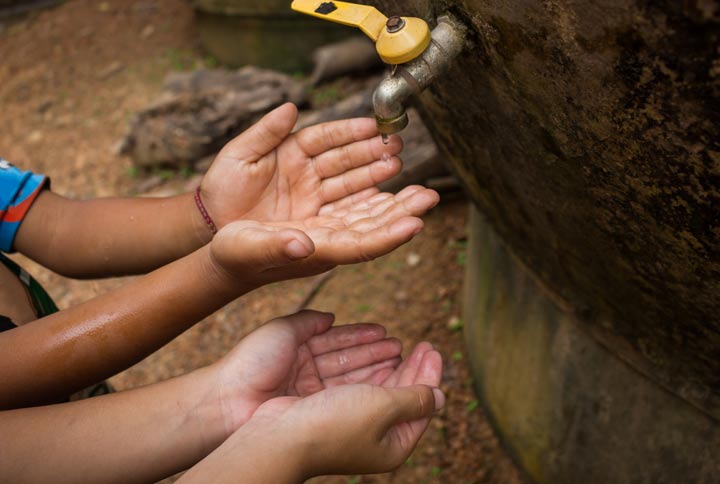#IfTreesCouldTalk is a blog series that aims to highlight one aspect of environmental impact, wildlife conservation and other issues that need to be spoken about from the natural world and our impact on it. The idea was simple. We just believe that if Mother Nature had a voice, there would be a lot she would have to say about the state of the world today and what we can do to help. This is just our effort to give her a voice.
https://www.instagram.com/p/BzDLToUDklJ/?igshid=kc60m3ri243g
If you’ve been following the news, you may be aware of what’s happening in Chennai right now. For those unaware, the city of more than 10 million people, is facing a severe crisis: it has run out of water. This has left its people scavenging for water for their drinking, bathing and laundry requirements. Companies have asked people to work from home, smaller restaurants have shut shop, malls have closed down their toilets, the air conditioning at metro stations has been switched off, price of bottled water has reportedly gone up by 4 times, hotels are running the risk of shutting down, and doctors have been left with no choice but to buy water for surgery. Meanwhile, the common man runs behind tankers and stands in long queues to fill their vessels. And the government scrambles around for quick, short-term solutions to fix this somehow.
How did this happen?
Now of course, this didn’t happen overnight. The capital of Tamil Nadu is largely dependent on rainfall to meet its water requirements. Last year, it rained less than normal in the region. Add this year’s delayed monsoon and the rising summer temperatures, and the result was the drying up of the city’s 4 lakes that are its major suppliers. So much so that they don’t hold even 1% of their capacity right now, leading to a daily deficit of at least 200 million litres of water.
Here are satellite images of a lake taken in 2018 (left) and in 2019 (right). The stark difference between the two within a span of a year, is simply shocking.
https://www.instagram.com/p/BzN5XF2lUzT/?igshid=qesp10lfzl3n
Check out the current state of Chennai’s water reservoirs in contrast to their normal capacity.
Nature or nurture?
While it’ll be super convenient to blame nature and climate change, it’s necessary to take responsibility for what is disturbingly, a man-made disaster as well. Don’t forget, Chennai is a flood-prone area. So how can there be water scarcity in an area that gets enough rains to get flooded? The answer is: Lack of water management.
In a rush to ‘develop’, the city paved over its lakes and other infrastructures that could have helped store and replenish its water table during the monsoon. Which would have ensured the availability of water during the dry months ahead. This utter lack of disregard for its own future, was what led to Chennai’s current crisis—a situation that according to experts, is likely to follow in other Indian cities too.
Panic mode: On
Water scarcity is not a new phenomenon. 844 million people—that’s 1 in 9—lack access to it. In 2019, the World Economic Forum listed it as one of the largest global risks in the next decade.
While Chennai may be the first city in India to run out of its freshwater resource, it’s not the first globally. Between 2017-18, Cape Town in South Africa came pretty close to ‘Day Zero’ (when the water levels in the city’s dams would have fallen to below 13.5%). The city implemented major water restrictions, and became successful in saving more than half its daily usage. Thereby postponing the eventuality of Day Zero, while continuing the efforts towards conservation.
In countries like Sudan, Venezuela, Ethiopia, Tunisia and Cuba, there are large populations who consume only contaminated water.
So basically, what we’re trying to say is: it’s not a water-shortage grumble anymore. This is it. It’s real. Chennai is only the beginning in India. And our country can no longer afford to waste water.
Take a look at the BBC News post that actor Leonardo DiCaprio regrammed.
What can we do?
Here’s an infographic to give you an idea of what water consumption looks like.
In this bleak situation, it may seem like it’s too late to do anything that could have an impact. However, statistically that has been proven to be untrue. On an average, a person in India uses 130-150 litres of water per day. But if you adopt a few, small, yet highly effective ways, you could end up saving 30,000 litres of water in a year! Now that’s something to ponder over.
So, if you aren’t already doing them, here are some small ways you can tweak your daily habits to make a significant difference:
- Use a bucket to bathe, instead of taking showers. Yes, even to wash your hair. (Pro tip: Dip hair in bucket a few times, instead of pouring mugfuls on your head). This saves 8.5X water.
- Brush your teeth using a glass of water, instead of running the tap. This saves 6 litres of water per minute.
- Use a pan full of water to wash your fruits and vegetables, which you can reuse to water your plants.
- Fix all leaky taps in your home. This saves 15 litres of water a day, or 5,500 litres of water a year.
- Use a bucket of water to wash dishes than directly under a tap. Can save up to 75 litres of water.
- Place a brick or a plastic bottle filled with pebbles in your flush tank. Saves up to 15-30 litres of water daily that could otherwise end up in the toilet.
- Get at least a couple of wears out of your clothes, before throwing them in the washing machine. One load of laundry uses around 100 litres of water.
- Use a bucket of water instead of a hose to clean your car. Skip a daily wash and do it only weekly.
If you’re looking to up your water conservation game, here’s another way—adopt a vegan lifestyle. One person who goes vegan can save approximately 830, 000 litres of water a year!
What steps have you personally taken to save water? Please share with us in the comments below!
We often discuss environmental issues and engage in meaningful conversations in Malini’s Girl Tribe. Join the Tribe here and be a part of this wonderful, growing community of women!

